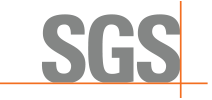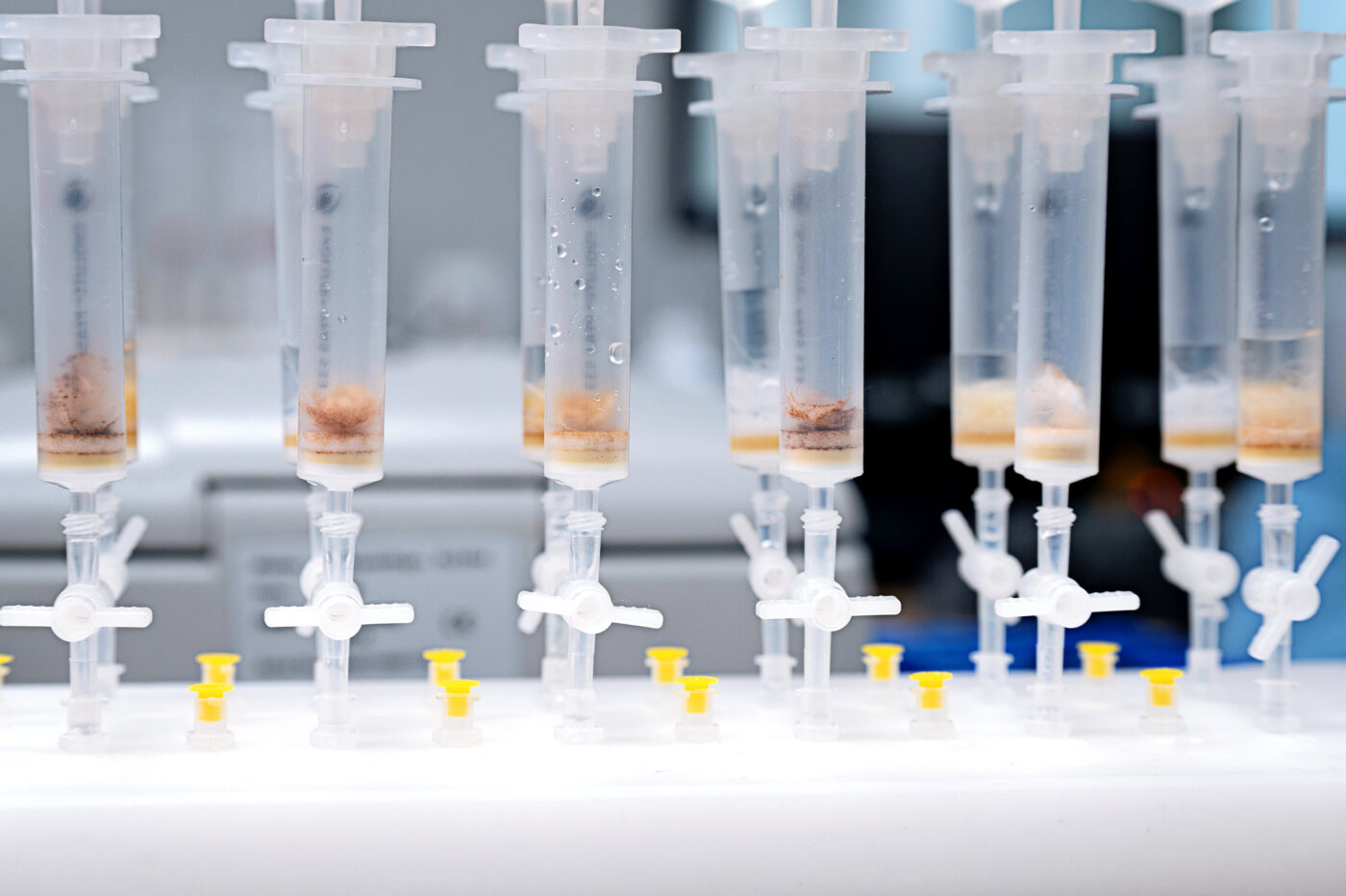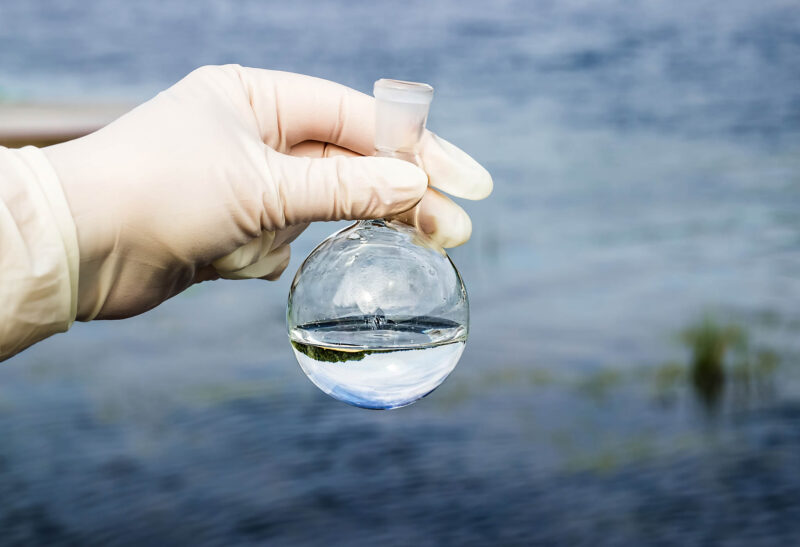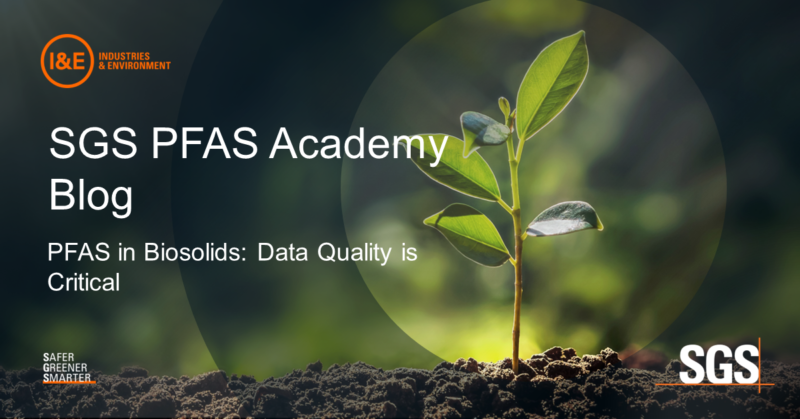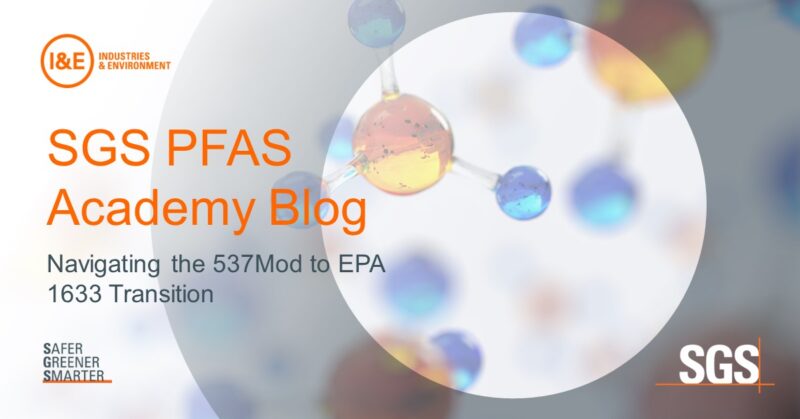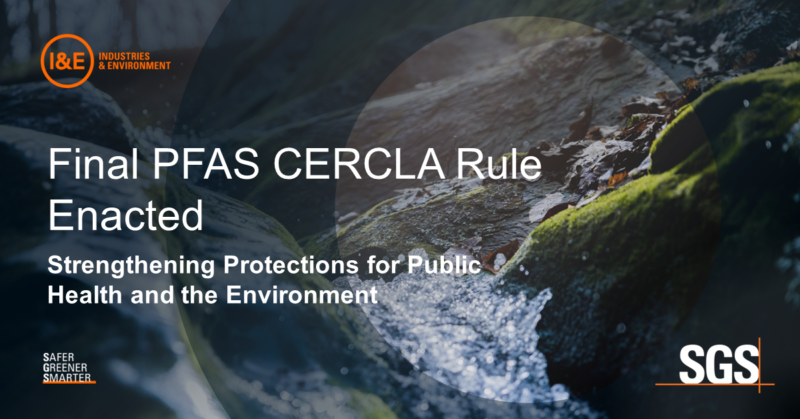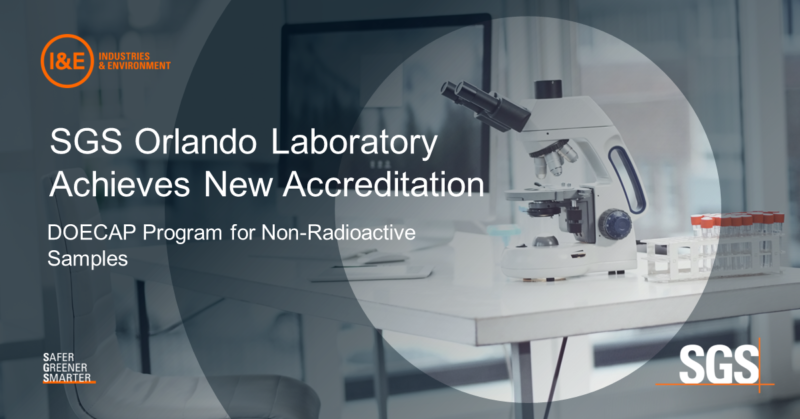Key SGS PFAS Project Examples
Potable, Surface and Groundwater
We maintain high-capacity accredited capabilities for the measurement of aqueous samples using EPA 537.1,533, 1633 or inhouse methods as necessary. Our work for the United States Geological Survey (USGS) and government of Pennsylvania on the first statewide assessment of PFAS in surface waters and streams was published in Breitmeyer et al. 2023. This work showed that PFAS was ubiquitous in Pennsylvania streams with electronics manufacturers and water pollution control facilities, especially in oil & gas development regions were top potential sources and associated with higher PFAS levels.
We have supported many region-wide and nationwide fish monitoring efforts to support fish advisories and understand background and impairment levels. Our use of 1633A and predecessor methods means standardized, benchmarked measurements that support even decades-long longitudinal studies. One such study measured aqueous, soil and fish samples in San Francisco Bay and was published in May, 2025. This study detected 20 different per- and polyfluoroalkyl substances (PFAS) and was essential for shaping future health guidelines and protecting communities.
Site Characterization
SGS has supported several site characterization projects for Department of Defense sites using D0D QSM-accredited methods. As one of the first commercial labs in the DoD program, we maintain high capacity for DoD SI/RI work.
Landfill Leachates
Our work on landfill leachate monitoring predates EPA 1633 and our history with this challenging matrix resulted in the successful validation of landfill leachates under 1633. We supported the State of Washington in a statewide survey of municipal landfills. The results from this study were published in a peer-reviewed journal article featuring SGS senior scientist Bharat Chandramouli as a coauthor.
The study featured the use of both target PFAS analysis and TOP analysis and showed that the combination of these two tools was successful in characterizing both known and unknown PFAS from the landfills and identifying 5 distinct factors or source types. 5:3FTCA, a target new to 1633 was the most ubiquitously detected PFAS in landfill leachate.
Air Force
SGS has been supporting the United States Air Force with PFAS investigations throughout the United States. In an effort to protect the airmen, the USAF is investigating the source of drinking water on active military investigations.
Wastewater
SGS has been supporting state/federal agencies to understand PFAS in waste for 15 years. For example, we support the San Francisco Estuary Institute and the Bay Area Clean Water Agencies (BACWA) in their monitoring of PFAS in San Francisco Bay Area POTWS. In their Phase I report published in 2021, the agencies used a combination of target analysis for 40 PFAS using the SGS internal method that became1633 and our quality-enhanced TOP assay. the agencies used a combination of target analysis for 40 PFAS using the SGS internal method that became1633 and our quality-enhanced TOP assay.
Initial findings show that “The sum of quantified PFAS TOP concentrations were significantly higher across matrices studied, with median concentrations of 231 ng/L in influent and 594 ng/L in biosolids. These results emphasize the importance of evaluating PFAS precursors to understand the scope of PFAS presence in wastewater samples.”
Remediation
Our high-level of technical expertise means we are a go-to laboratory to support challenging analyses to support remediation and other PFAS R&D projects. These samples are complex, with their high levels of added chemicals, high variation from day to day and sample to sample depending on the treatment. Also, there is need for quick data and screening approaches so experiments can be turned around quickly. We act as your research partner in every way possible to maximize your chance of success, especially with grant-funded initiatives such as SERDP, ESTCP and more. The availability of EPA 8327 and ASTM quick soil screening methods means quick access to screening level quantitative data. One recent example of our work on the efficacy of Rapid Small-Scale Column Tests (RSSCTs) for assessing PFAS treatment efficacy was published in 2020 by Schaefer et al.
Human Biomonitoring
SGS has supported several large and high-profile human biomonitoring studies over the last 15 years starting with our work as the quality control laboratory on the Parkersburg West Virginia C8 human monitoring project. Our low PFAS backgrounds and rigorous attention to detail means we can successfully analyze PFAS in thousands of samples with a consistently high level of data quality. Recently, we supported sensitive work studying the association between PFAS levels and thyroid disruption in Alaska natives, published by Byrne et al. 2018.
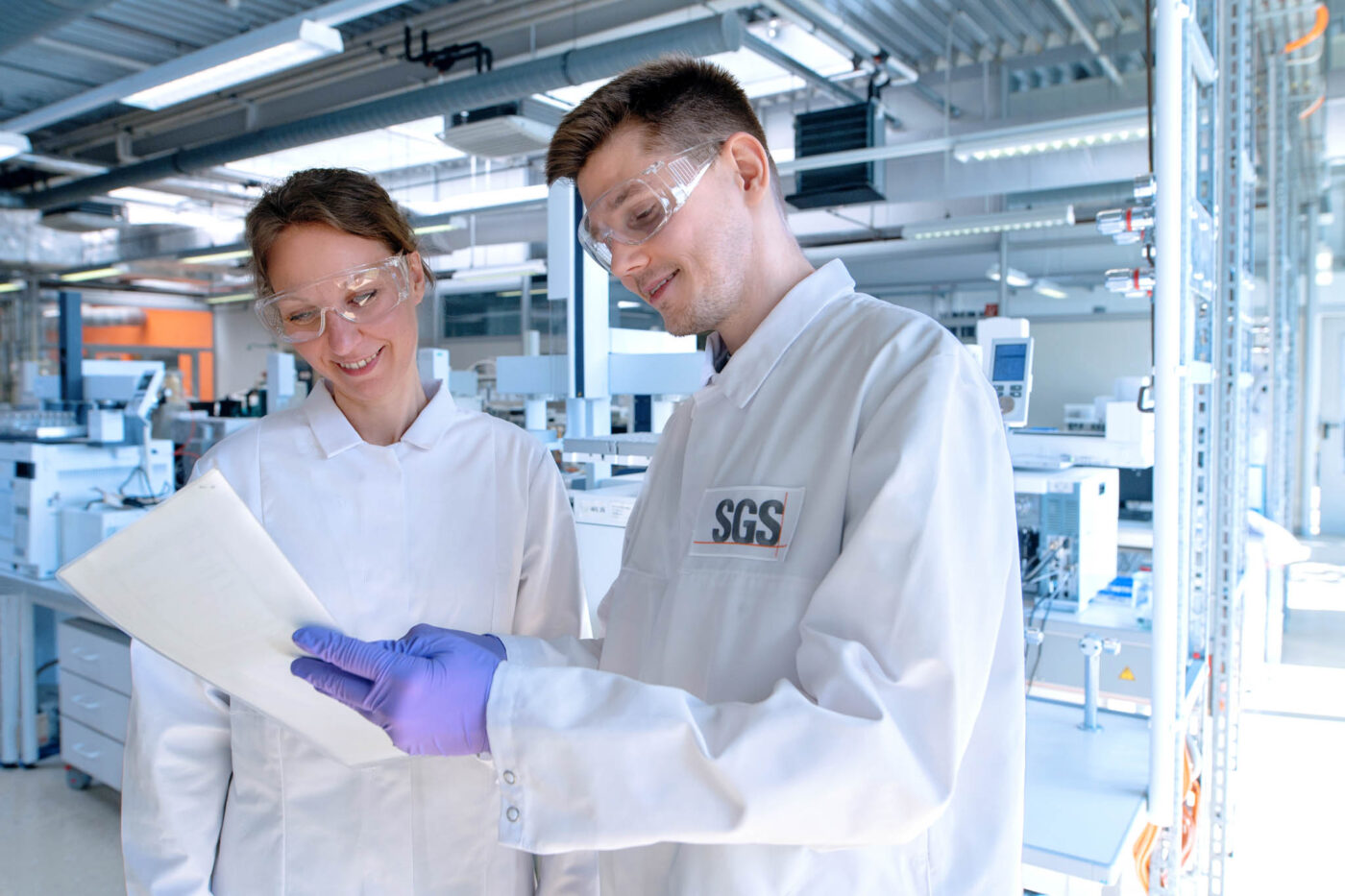
Reliable and defensible data is the cornerstone of informed decisionmaking, especially when dealing with substances as critical as PFAS. From sample collection to analysis and reporting, following these guidelines will help you maintain the highest standards of data quality, ultimately empowering you to make sound, evidencebased choices in managing PFAS.
Contact Us
For more information contact:
[email protected]
Why SGS for PFAS Analysis?
- Capacity: We have invested heavily in capacity and geographical coverage (10+ labs) and can offer 1–3 day turnaround options for screening level methods, and in some cases, fully determinative methods such as EPA 1633A.
- Support: We support every matrix from simple drinking water to complex spent media, tissue, serum and products.
- Expertise: We have been measuring emerging contaminants since the 1970s, PFAS since 2003 and have shaped PFAS best practices on storage, stability, sampling, interferences and more. Our leadership resulted in SGS authorship/validation of EPA 1633.
- Accreditation: Our dedicated North America-wide accreditation team plays a pivotal role in ensuring our continuous PFAS compliance is up to date with the latest accreditations, regulations, and industry standards.
- Network: Our nationwide (and global) network means you can leave the sampling supplies and sample delivery logistics to us and focus on your project.
- Innovation: We were one of the first networks in the DoD PFAS program and continue our long-standing support of DoD PFAS cleanup effort with industry leading data quality and TAT.
